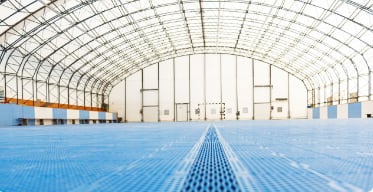Product fulfilling a building function
Act No. 183/2006 Coll., the “Act on Town and Country Planning and Building Code”, generally known as the Building Act, indicates in Section 103 Structures, landscaping, facilities and maintenance works which do not require a building permit or notification. Point 16) then indicates “products fulfilling a building function, including foundation structures beneath.
Our halls are certified as products fulfilling the function of a building; the specific interpretation of the letter of the law, however, depends on the local building authority.
Agricultural buildings
So-called “agricultural buildings” are given the same allowance in the Building Act as products fulfilling a building function; namely, they do not require a permit or notification.
This, however, does not apply to all buildings intended for agriculture, but to clearly specified buildings. These buildings are indicated in Section 103 (1) (e) (2) of the Building Act and specified as :
""Structures for agriculture up to 60 m2 of developed area and up to 5 m in height, without a basement; structures for agriculture over 60 m2 of developed area or over 5 m in height up to 300 m2 of developed area and up to 7 m of height, of one above-ground floor, without a basement, and do not require a building permit or notification of the Building Authority, with the exception of animal housing, breeding and agricultural structures which should serve for storage and processing of flammable substances (e.g. drying machines, warehouses of flammable liquids, warehouses of chemical fertilizers).
Notified structure
The Building Act, Section 104 (1) specifies simple structures, landscaping and maintenance works for which a notification is sufficient. Point (c) specifies:
""Structures up to 300 m2 of developed area and height of 10 m, with the exception of residential buildings, and halls up to 1000 m2 of developed area and height of 15 m, if these structures and halls contain maximally one above-ground floor, have no basement and are temporary for a maximum period of 3 years; the temporary period cannot be extended.""
This enables halls of a total developed area of 1000 m2 to be built in the mode of building notification only; however, only for a clearly specified period of 3 years, without the possibility of extension of this period. This means for the proprietor that upon expiry of this period the structure must be removed, or undergo the process of gaining a full building permit.


